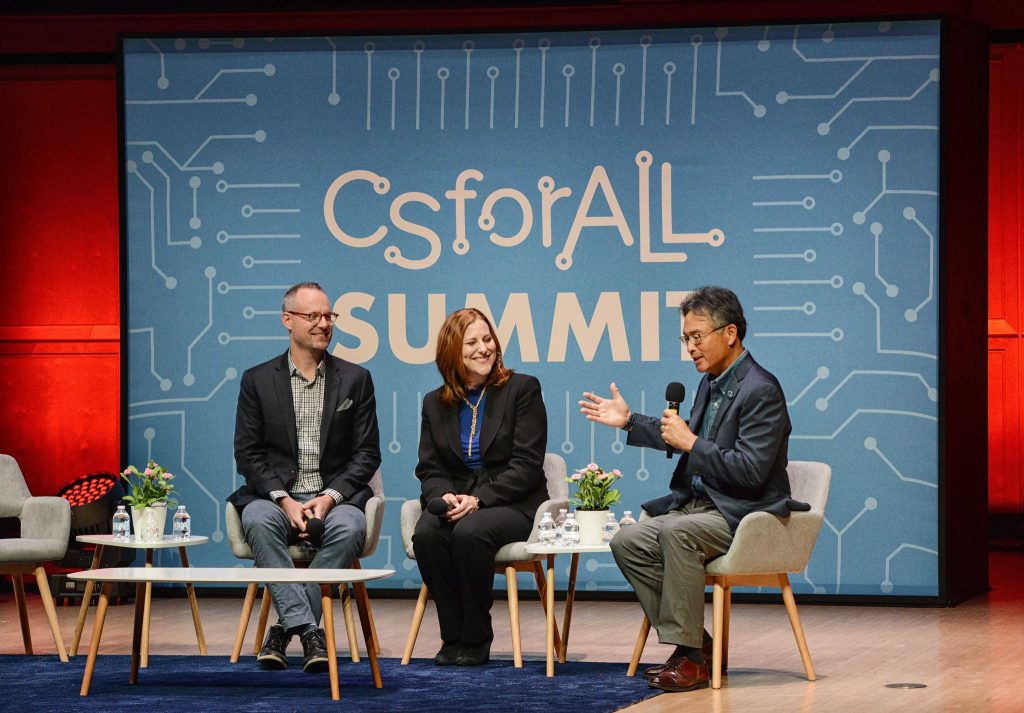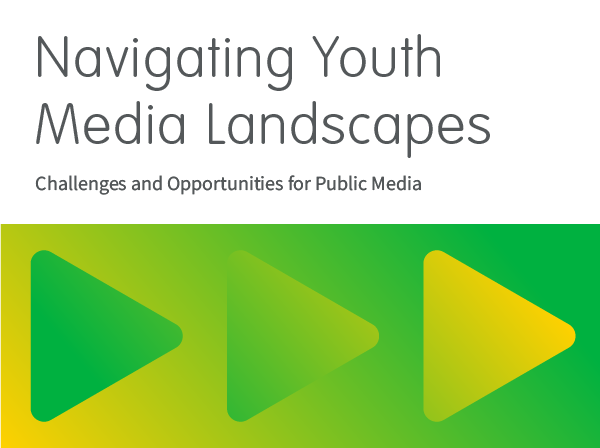When Sesame Street first went on the air in 1969, it was part of a movement to help public media reshape what then-FCC Chairman Newton Minow called “the vast wasteland” of programming. Today, more children have access to their own smartphones and tablets than ever before, and almost any kind of content they might want to watch is just a search bar and a click away. What are some of the lessons that we can learn from public media’s successes in reaching diverse audiences—and can public media keep up with this rapidly evolving landscape to keep young people engaged?
On October 21, 2019, Michael Preston joined Milton Chen (George Lucas Educational Foundation) and Debra Sanchez (Corporation for Public Broadcasting) at the annual CSforALL Summit in Salt Lake City for a fireside chat, “Leveraging Public Media to Inspire All Kids to See Themselves in Tech.” Together, they discussed the history of public media’s commitment to helping children learn through high-quality educational television, including Sesame Street and Mr. Rogers’ Neighborhood, and its role in shaping engaged citizens who will help build a brighter future.

Debra Sanchez pointed out that one of public media’s strengths is that its producers have always known that designing great content is critical. Thoughtfully-designed characters and content can help to introduce concepts that might be challenging and hold a child’s hand throughout the learning experience. Michael Preston agreed, noting that Sesame Street has always made great efforts to portray diversity, featuring characters—humans and Muppets—of all backgrounds, including racial, socioeconomic, and gender. (Designers and producers may be interested in Designing for Diverse Families, which features case studies and a research-based design guide on creating media for diverse audiences.)
Public media producers also strive to engage family members to participate in a child’s learning. From the very beginning, Sesame Street was designed to appeal to parents as well as children, and continues to engage caring adults as partners in children’s learning and entertainment. Today, public media stations are building unique partnerships within their local communities that create opportunities for families to participate in learning activities together such as family creative learning workshops with Scratch. In Los Angeles, for example, PBS SoCal has been working with partners at USC Viterbi School of Engineering to design “playshops” that encourage families to learn about coding and robotics, and producers at WGBH are creating adult education programs and multimedia resources to empower parents to explore STEM learning together.
Milton Chen noted that the US has invented new technologies that transformed the media landscape, but that we have also seen a rapid commercialization of these technologies. The original mandate of public media was to provide access to education content to all Americans for free. Is it still the best hope? How can public media help create a brighter future for all kids?
Both Preston and Sanchez agreed that the need for high-quality public media is as important today as ever, perhaps because of the highly volatile nature of the media landscape competing for our attention.
“It’s an age of information overload,” said Michael Preston. “Our brains can’t always distinguish sources that are credible or not.” And while we have, in many ways, benefited from the platforms that broaden participation, he continued, “There are risks too, in the tension between formal journalism and the social internet, and the risk of misinformation.” Is the commercial internet adequate for our civil discourse? What role might public media play? Is it possible to establish independent, non-commercial ways to support access to information, free speech, and dialogue in service of the public good, the equivalent of the public spaces and infrastructure that we rely on every day?
In many ways, said Debra Sanchez, we’re grappling with the same issues that Joan Ganz Cooney and Fred Rogers faced more than 50 years ago. They knew that television could be used to reach, and teach, underserved children. Today, children are almost overserved with media choices in what Minow might call a modern “wasteland” that still leaves children underserved with high-quality learning opportunities.
As we look toward the future, public media aims to leverage its strength as a source of trusted content by meeting audiences where they are: learning more about people within their communities, and reaching them via the platforms that they are using.

